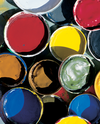Bodhi Linux and the Moksha desktop
|
For a long time now, Bodhi Linux has been the only Ubuntu-based distribution making use of the lean and visually pleasing Enlightenment desktop, which functions as the standard work interface.
The project team now presents an overhauled system with the 3.1.0 release. It is based on Ubuntu 14.04 with LTS support and for the first time also on Enlightenment fork Moksha. Moksha is the Sanskrit word for enlightenment or liberation . It draws on the positive characteristics of Enlightenment E17, including speed, limited resource consumption, and stability. Moreover, it has been freed of any unnecessary ballast.
Preparations
Moksha shines in spite of the low version number 0.1.0 because of its configurability and elegant appearance. In light of its moderate hardware requirements, Moksha makes older computer systems productive again with its pleasing and contemporary graphical interface. This is true even for very outdated machines where the original Ubuntu wouldn't begin to start but Bodhi Linux works smoothly.
[...]
Buy this article as PDF
Pages: 4
(incl. VAT)






